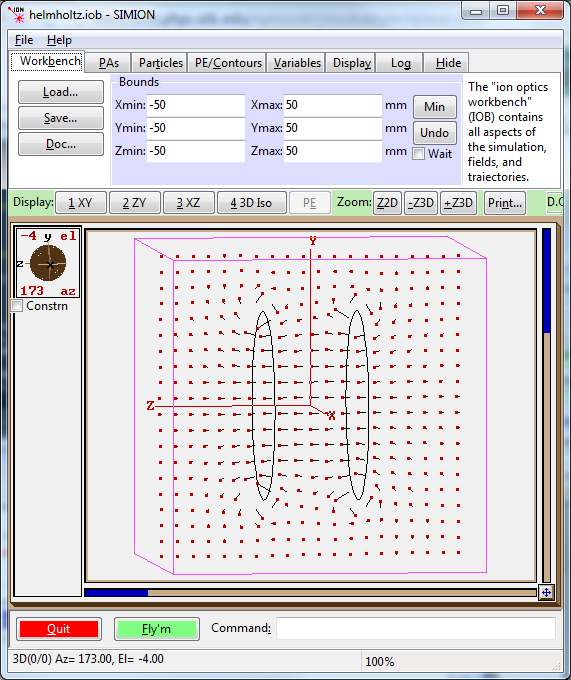Helmholtz Coil¶
A Helmholtz coil is a pair of co-axial circular coils of current arranged to produce a fairly uniform magnetic field between the coils by setting the distance between the coils equal to the coil radius.

Fig. 54 Figure: SIMION simulation (Biot-Savart) of two wire coils, showing magnetic field vectors on axial plane.
Helmholtz coils may be used as magnetic shielding. The uniform field from the Helmholtz coil can be used to cancel out Earth’s magnetic field (roughly 0.6 gauss), for example. An alternate method of shielding is using mu metals (high permeability material). See [1] (5.6.5 Magnetic Field Control) for more practical details. This is also related to the air-core solenoid, which also generates uniform fields but has the disadvantage of limiting access to the interior volume [1] (see also [2] for other configurations).
In a magneto-optic trap (MOT), the currents in both coils of the Helmholtz pair run in opposite directions (anit-Helmholtz configuration), generating a non-uniform field (spherical quadrupole trapping field).
See SIMION Example: helmholtz_coil, which also explores the Three-Axis Helmholtz Coil and anti-Helmholtz configuration.
See Also¶
| [1] | (1, 2) John H. Moore. Christopher C. Davis. Michael A. Coplan. Building scientific apparatus: a practical guide to design and construction. G:D48NFxh68IIC. 23 July 2002. Westview Press. ISBN:978-0-8133-4006-7. |
| [2] | Caprari, R S. Optimal current loop systems for producing uniform magnetic fields Measurement Science and Technology. volume 6, issue 5, year 1995, pages 593-597. doi:10.1088/0957-0233/6/5/022 |
